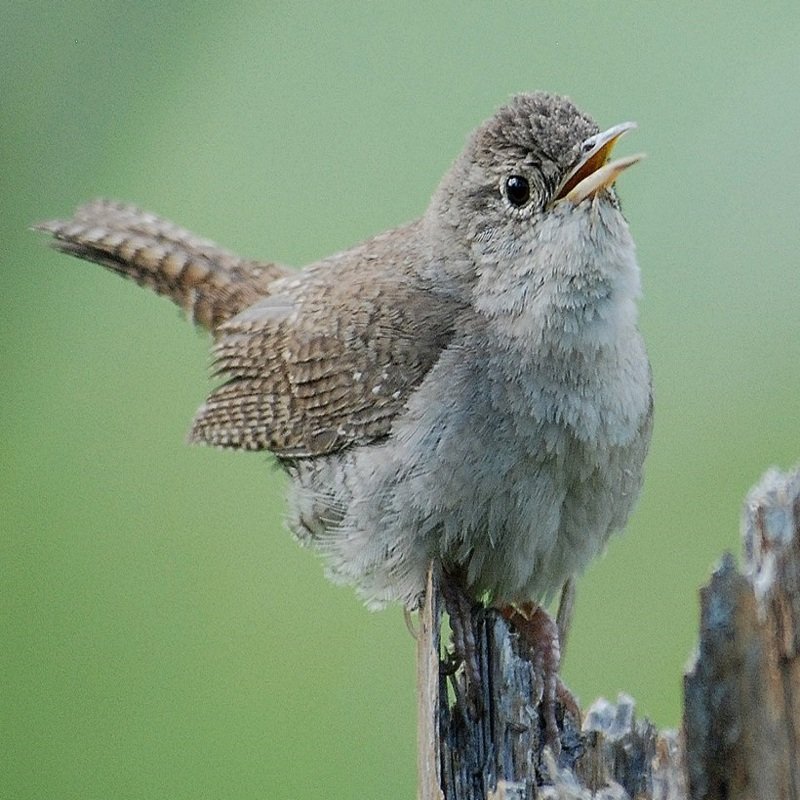The house wren, or in Latin named Troglodytes Aedon, is a small songbird belonging to the wren family, Troglodytidae, that can be found in suburban areas. It can be found from northern Canada to the southernmost tip of South America, making it the most widely distributed native bird in the world. Its taxonomy is extremely complex, and some subspecies groups are frequently considered to be separate species in their own right. In Greek, troglodytes mean “hole dweller,” and refers to the bird’s tendency to disappear into crevices when hunting for insects or seeking shelter.
Quick Overview: Troglodytes Aedon – House Wren
Body size: Around 4-5 in (10-13 cm) and a weight of 11 g (0.4 oz)
Main colors: Gray, Black, Brown, White
Range: United States
Migratory Bird: Yes
Best time of the year to see in the U.S.: January, February, June, July, August, September, December
Conservation Status: Least Concern
House wren Description
They are small, squat birds with no distinctive markings. They have long, curved bills and, like other wrens, perch with their tails raised. There are fine darker brown stripes on their heads, napes, and backs. Their throats and chests are light grays, and their flanks, tails, and wings may be black, dark brown, or pinkish. Above their eyes is a thin white brow-like stripe.

Size
These birds have a length of 4-5 in (10-13 cm) and a weight of 11 g (0.4 oz). Their wings could range from 6-7 in (15-18 cm).
Feeding
House wrens eat mostly terrestrial insects. The nestlings are fed grasshoppers, crickets, and caterpillars while the adults eat spiders, beetles, and bugs. Adults feed their young and eat mollusk shells for calcium. Most of their food comes from shrubs and herbaceous ground cover in woodland subcanopy.
Habitat
House wrens prefer open, shrubby woodlands. They were named for their love of human-made birdhouses and small-town and suburban backyards. These birds prefer small woodlots and forest edges. By fragmenting forests, humans have increased the wren’s breeding habitat.
Behavior
In open areas, house wrens fly directly and steadily about 1 meter above the ground. They are day and night. House wrens live alone, in pairs, or in small family groups. Males defend the territory and chase away intruders.
Troglodytes Aedon Scientific Classification
- Kingdom: Animalia
- Phylum: Chordata
- Subphylum: Chelicerata
- Class: Aves
- Order: Passeriformes
- Family: Troglodytidae
- Genus: Troglodytes
- Species: Troglodytes aedon
Best time of the year to see
The best time to see these birds in the United States are during summer (June to September) and winter (December to February).
Distribution of the House wren in the USA
House wrens are Nearctic natives. This species breeds in southern Canada, Chile, and the Falkland Islands. They spend the winter in a smaller range, southwestern California to Florida and south along the Gulf Coast and into Mexico.
The House wren can be found in the following states in the United States – Alabama, Alaska, Arizona, Arkansas, Colorado, Connecticut, Delaware, Georgia, Hawaii, Idaho, Illinois, Indiana, Iowa, Kansas, Kentucky, Louisiana, Maine, Maryland, Massachusetts, Michigan, Minnesota, Mississippi, Missouri, Montana, Nebraska, Nevada, New Hampshire, New Jersey, New Mexico, New York, North Carolina, North Dakota, Ohio, Oklahoma, Oregon, Pennsylvania, Rhode Island, South Carolina, South Dakota, Tennessee, Texas, Utah, Vermont, Virginia, Washington, West Virginia, Wisconsin and Wyoming.

